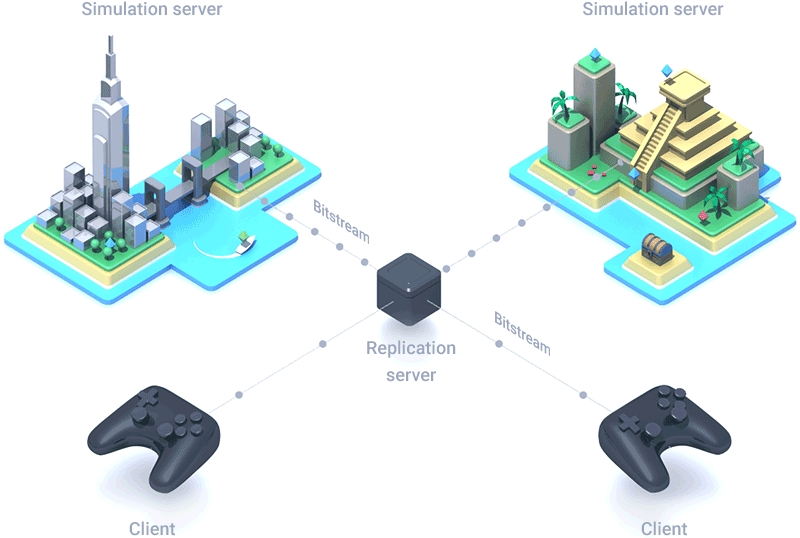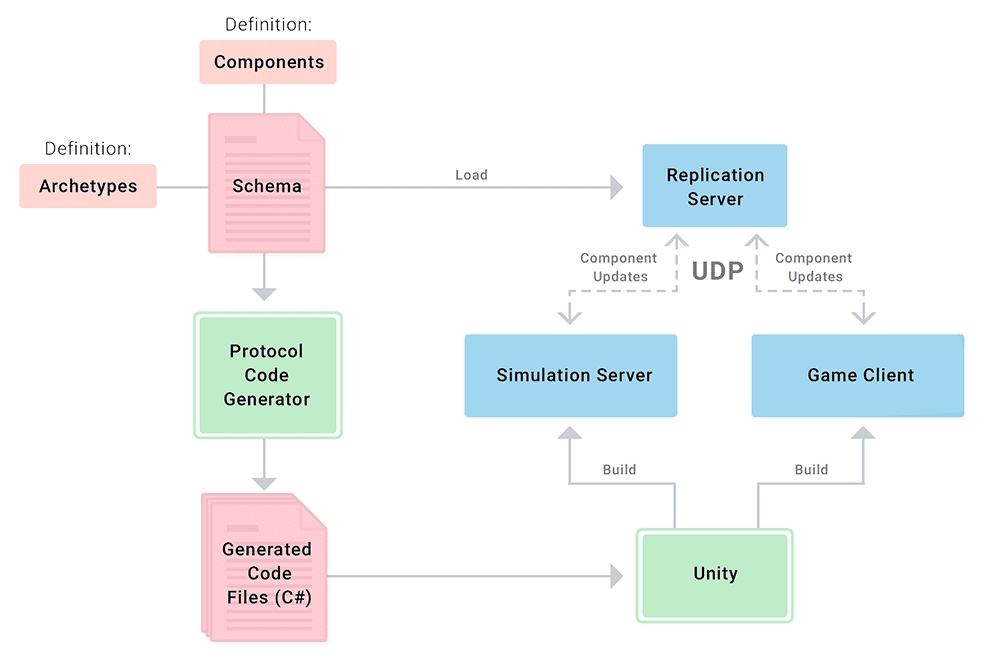How does coherence work?

coherence works by sharing game world data via a Replication Server in the cloud and passing it to the connected Clients.
The Clients and Simulators can define areas of interest (LiveQueries), levels of detail, varying simulation and replication frequencies and other optimization techniques to control how much bandwidth and CPU power is used in different situations.
The game world can be run using multiple Simulators that split up simulation functions or areas of the world accordingly.
Fast authority transfer and remote commands allow different authority models, including Client authority, Server authority, distributed authority and combinations like Client prediction with input queues.
The platform handles scaling, synchronization, persistence and load balancing automatically.
What is coherence made of?
Replication Server (RS)
A lean and performant server that keeps the state of the world and replicates it efficiently between various Simulators and Game Clients. The Replication Server usually runs in the coherence Cloud, but developers can start it locally from the command line or the Unity Editor.
Game Client
A build of the game. To connect to coherence, it will use the coherence SDK.
Simulation Server ("Simulator")
A Simulator is a version of the Game Client without the graphics ("headless client") optimized and configured to perform server-side simulation of the game world. When we say something is simulated on the server, we mean it is simulated on one or several Simulators.
Schema
A text file defining the structure of the world from the network's point of view. The schema is shared between the Replication Servers, Simulators and Game Clients. The world is generally divided in components and archetypes.

Code generation ("Baking")
This is the process of generating code specific to the game engine that takes care of network synchronization and other network-specific code. This is also known as Baking and is done using a CLI tool called Protocol Code Generator that takes the schema file and generates code for various engines (e.g. C# for Unity).
State replication
The process of making sure the state of the world is eventually the same on the Replication Servers, Simulators and Game Clients, depending on their areas of interest.
State Replication
coherence works by sharing game world data via a Replication Server in the cloud and passing it to the connected Clients.
The Clients and Simulators can define areas of interest (LiveQueries), levels of detail, varying simulation and replication frequencies and other optimization techniques to control how much bandwidth and CPU power is used in different situations.
The game world can be run using multiple Simulators that split up simulation functions or areas of the world accordingly.
Fast authority transfer and remote commands allow different authority models, including Client authority, Server authority, distributed authority and combinations like Client prediction with input queues.
The platform handles scaling, synchronization, persistence and load balancing automatically.
Was this helpful?

